 |
by Zeyi Yang on (#6CV7X)
MIT Technology Review Explains: Let our writers untangle the complex, messy world of technology to help you understand what's coming next.You can read more here. China has been on the receiving end of semiconductor export restrictions for years. Now, it is striking back with the same tactic. On July 3, the Chinese Ministry of Commerce...
|
MIT Technology Review
| Link | https://www.technologyreview.com/ |
| Feed | https://www.technologyreview.com/stories.rss |
| Updated | 2025-12-16 23:18 |
 |
by Rhiannon Williams on (#6CSDV)
This is today's edition ofThe Download,our weekday newsletter that provides a daily dose of what's going on in the world of technology. AI-text detection tools are really easy to fool The news: As soon as ChatGPT launched, there were fears that students would use the chatbot to churn out passable essays. In response, startups started...
|
 |
by Rhiannon Williams on (#6CSDW)
Within weeks of ChatGPT's launch, there were fears that students would be using the chatbot to spin up passable essays in seconds. In response to those fears, startups started making products that promise to spot whether text was written by a human or a machine. The problem is that it's relatively simple to trick these...
|
 |
by Jessica Hamzelou on (#6CS9B)
This article first appeared in The Checkup, MIT Technology Review's weekly biotech newsletter. To receive it in your inbox every Thursday, and read articles like this first, sign up here. We're well into summer here in the Northern Hemisphere. For a parent of two young children, that means ice creams, water fountains, picnics, and-inevitably-coughs and...
|
 |
by MIT Technology Review Insights on (#6CRJH)
From traditional manufacturing companies using AI in robots to build smart factories to tech startups developing automated customer service and chatbots, AI is becoming pervasive across industries. AI is no longer just in assistant mode, but is now playing autonomous roles in robotics, driving, knowledge generation, simulating our hands, feet, and brains," says Lan Guan,...
|
 |
by Rhiannon Williams on (#6CRFS)
This is today's edition ofThe Download,our weekday newsletter that provides a daily dose of what's going on in the world of technology. The $100 billion bet that a postindustrial US city can reinvent itself as a high-tech hub On a day in late April, a small drilling rig sits at the edge of the scrubby...
|
 |
by Casey Crownhart on (#6CRD9)
This article is from The Spark, MIT Technology Review's weekly climate newsletter. To receive it in your inbox every Wednesday, sign up here. A few weeks ago, I found myself in a room where fluorescent lights reflected off the stainless steel tanks lining the walls. The setup reminded me of an exceedingly high-tech craft brewery....
|
 |
by David Rotman on (#6CRBE)
For now, the thousand acres that may well portend a more prosperous future for Syracuse, New York, and the surrounding towns are just a nondescript expanse of scrub, overgrown grass, and trees. But on a day in late April, a small drilling rig sits at the edge of the fields, taking soil samples. It's the...
|
 |
by Microsoft on (#6CQS5)
When it comes to the ability to generate, arrange, and analyze content, generative AI is a gamechanger-one with transformative social and economic potential. As a technology that is democratized-one that doesn't simply exist in a faraway lab or tech community in Silicon Valley, for instance-generative AI lowers the barriers to participation. In the age of...
|
 |
by Melissa Heikkilä on (#6CQNS)
As climate change makes weather more unpredictable and extreme, we need more reliable forecasts to help us prepare and prevent disasters. Today, meteorologists use massive computer simulations to make their forecasts. They take hours to complete, because scientists have to analyze weather variables such as temperature, precipitation, pressure, wind, humidity, and cloudiness one by one....
|
 |
by Rhiannon Williams on (#6CQJW)
This is today's edition ofThe Download,our weekday newsletter that provides a daily dose of what's going on in the world of technology. This is how AI will transform how science gets done -by Eric Schmidt, former CEO of Google, and current co-founder of philanthropic initiative Schmidt Futures With the advent of AI, science is about...
|
 |
by Eric Schmidt on (#6CQGE)
It's yet another summer of extreme weather, with unprecedented heat waves, wildfires, and floods battering countries around the world. In response to the challenge of accurately predicting such extremes, semiconductor giant Nvidia is building an AI-powered digital twin" for the entire planet. This digital twin, called Earth-2, will use predictions from FourCastNet, an AI model...
|
 |
by Rhiannon Williams on (#6CPVT)
This is today's edition ofThe Download,our weekday newsletter that provides a daily dose of what's going on in the world of technology. Job title of the future: metaverse lawyer In a virtual office, lawyer Madaline Zannes conducts private consultations with clients, meets people wandering in with legal questions, hosts conferences, and gives guest lectures. Zannes...
|
 |
by Rhiannon Williams on (#6CP0J)
This is today's edition ofThe Download,our weekday newsletter that provides a daily dose of what's going on in the world of technology. Here's what we know about lab-grown meat and climate change Soon, the menu in your favorite burger joint could include not only options made with meat, mushrooms, and black beans but also patties...
|
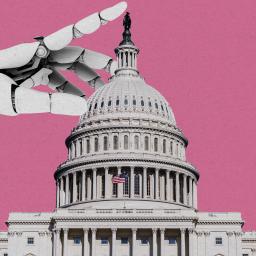 |
by Tate Ryan-Mosley on (#6CNYK)
This article is from The Technocrat, MIT Technology Review's weekly tech policy newsletter about power, politics, and Silicon Valley. To receive it in your inbox every Friday,sign up here. Last week, Senate majority leader Chuck Schumer (a Democrat from New York) announced hisgrand strategy for AI policymakingat a speech in Washington, DC, ushering in what...
|
 |
by Casey Crownhart on (#6CNWP)
MIT Technology Review Explains: Let our writers untangle the complex, messy world of technology to help you understand what's coming next. You can read more here. Soon, the menu in your favorite burger joint could include not only options made with meat, mushrooms, and black beans but also patties packed with lab-grown animal cells. Not...
|
 |
by Rhiannon Williams on (#6CKZY)
This is today's edition ofThe Download,our weekday newsletter that provides a daily dose of what's going on in the world of technology. How gene-edited microbiomes could improve our health Microbes are everywhere, and the ones in our bodies appear to be incredibly important for our health. They've developed intricate relationships with other living systems, feeding...
|
 |
by Jessica Hamzelou on (#6CKVW)
This article first appeared in The Checkup, MIT Technology Review's weekly biotech newsletter. To receive it in your inbox every Thursday, and read articles like this first, sign up here. Microbes have been on my mind this week. These tiny organisms are everywhere, and the ones that reside in our bodies appear to be incredibly...
|
 |
by Rhiannon Williams on (#6CK33)
This is today's edition ofThe Download,our weekday newsletter that provides a daily dose of what's going on in the world of technology. Humans may be more likely to believe disinformation generated by AI The news: Disinformation generated by AI may be more convincing than disinformation written by humans, according to a new study. It found...
|
 |
by Casey Crownhart on (#6CJYE)
This article is from The Spark, MIT Technology Review's weekly climate newsletter. To receive it in your inbox every Wednesday, sign up here. I briefly became a vegetarian around the age of 13. The story is a common one in my generation, I think: I saw a video of slaughterhouse conditions, cried my eyes out,...
|
by Elana Wilner on (#6CJG6)
The industrial metaverse has the potential to virtually and literally revolutionize the real world. By merging digital twins with their real-world counterparts, companies can optimize production and processes in a continuous feedback loop at previously unattainable speeds. This convergence of digital and real worlds will change the way we work and collaborate, enabling real-time interaction...
by Elana Wilner on (#6CJG7)
As organizations transition to data-driven business models, they must store, protect, and most importantly analyze their data. AI, automation, cloud, and as-a-service models all must frictionlessly interweaveto achieve universal data intelligence and enable businesses to gain a competitive advantage from their data. About the speakers Bharti Patel, SVP, Head of Engineering, Hitachi Vantara Bharti Patel...
 |
by MIT Technology Review Insights on (#6CJDX)
Open banking, which allows consumers to securely share their banking data with third-party providers (TPPs), continues to transform financial services. A new generation of financial technology (fintech) companies-peer-to-peer payment services, mobile banking apps, and trading platforms-offer consumers powerful tools to manage their money and extend their banking capabilities. According to the online data platform Statista,...
|
 |
by Rhiannon Williams on (#6CJBS)
Disinformation generated by AI may be more convincing than disinformation written by humans, a new study suggests. The research found that people were 3% less likely to spot false tweets generated by AI than those written by humans. That credibility gap, while small, is concerning given that the problem of AI-generated disinformation seems poised to...
|
 |
by Microsoft on (#6CJ2A)
In a recent speech, Microsoft CEO Satya Nadella evoked the lofty power of artificial intelligence (AI) to accelerate progress, prosperity, and standards of living. This technology reaches everyone in the world," he said. Generative AI takes an idea born in tech communities such as Silicon Valley and Tel Aviv-the ability of algorithmic engines to synthesize...
|
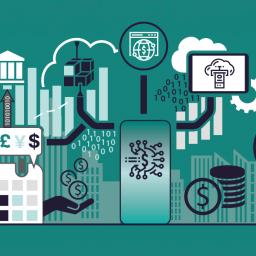 |
by MIT Technology Review Insights on (#6CJ0H)
With 2.5 billion payment cards used in more than 200 countries and territories across the globe, Mastercard faces a gigantic fraud risk. Credit card fraud accounted for more than $32 billion in losses-or about 6.6 cents per $100 in transactions-in 2021, with more than one-third occurring the U.S., according to a December 2022 Nilson Report...
|
 |
by Rhiannon Williams on (#6CJ0J)
This is today's edition ofThe Download,our weekday newsletter that provides a daily dose of what's going on in the world of technology. Introducing: the Accessibility issue When it comes to thinking about accessibility, so many of the dominant stories around technologies for disability, access, and mobility paint them as objects of empowerment or heroic, life-changing...
|
 |
by Zeyi Yang on (#6CHW6)
China Report is MIT Technology Review's newsletter about technology developments in China.Sign upto receive it in your inbox every Tuesday. Shein is launching a charm offensive. The once-obscure Chinese fast-fashion website has become increasingly mainstream. And to respond to accusations of terrible labor conditions, the company is now inviting US influencers to its operations in...
|
 |
by Nick Sousanis, Emily Beitiks on (#6CHV0)
For an audio adaptation with descriptive text and for annotations, visit:https://spinweaveandcut.com/mitcomic/
|
 |
by Rebecca Heilweil on (#6CHV1)
Floating is the new flying, at least according to a handful of companies focused on building futuristic blimps, airships, and hot-air balloons. Lighter-than-air vehicles (or LTAs) depend on the same basic physics that creates bubbles in water. They're filled with extremely light gas, like helium, which allows them to achieve lift and hover in the...
|
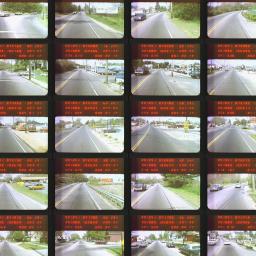 |
by Jon Keegan on (#6CHV2)
On May 10, 1985, a tricked-out van drove south on US Route 1 in Pawcatuck, Connecticut, on a sunny spring day. Every .01 miles, a 35-millimeter movie camera mounted on the dashboard captured an image out of the front of the van, along with a digital readout displaying the date, route, mileage, and bearing. Highway...
|
 |
by Ashley Shew on (#6CHV3)
Technology," wrote the late historian of technology Melvin Kranzberg Jr., is neither good nor bad, nor is it neutral." It's an observation that often doesn't stick with people as they think about technologies related to accessibility. So many of our dominant stories about technologies for disability, access, and mobility paint them as objects of empowerment...
|
 |
by Amanda Smith on (#6CHV4)
Lot #651 on Somnium Space belongs to Zannes Law, a Toronto-based law firm. In this seven-level metaverse office, principal lawyer Madaline Zannes conducts private consultations with clients, meets people wandering in with legal questions, hosts conferences, and gives guest lectures. Zannes says that her metaverse office allows for a more immersive, imaginative client experience. She...
|
 |
by Selam Gano ’18 on (#6CHFX)
I often explain the concept of structural inequality using the example of MIT's bathrooms. Though the Institute never explicitly banned women, its buildings were designed for male students and the overwhelmingly male faculty and staff. When MIT's Cambridge campus opened in 1916, the bathrooms along the Infinite Corridor accommodated only men. Female undergraduate enrollment hovered...
|
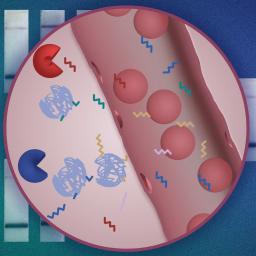 |
by Anne Trafton on (#6CHFY)
Ananoparticle sensordeveloped by Professor Sangeeta Bhatia, SM '93, PhD '97, and colleagues including former MIT postdoc Liangliang Hao, now an assistant professor at Boston University, could make it possible to detect and monitor cancers with an affordable paper-based urine test. The nanoparticles are a variation on a type of synthetic biomarker" developed in Bhatia's lab...
|
 |
by MIT News Staff on (#6CHFZ)
A Silent Fire: The Story of Inflammation, Diet, and DiseaseBy Shilpa Ravella '03W.W. NORTON & CO., 2022, $30 The Transcendent Brain: Spirituality in the Age of ScienceBy Alan Lightman, professor of the practice of the humanities PANTHEON, 2023, $26 A Crisis Like No Other: Understanding and Defeating Global WarmingBy Robert De Saro, SM '74BENTHAM BOOKS,...
|
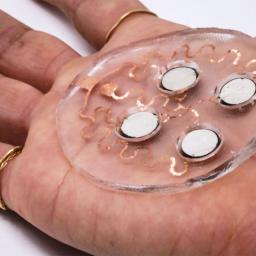 |
by Anne Trafton on (#6CHG0)
Patches stuck to the skin can be an appealing alternative to injections, pills, and other ways of getting medicines into the body. Two MIT groups have found ways to advance this technology. Canan Dagdeviren, an associate professor in the Media Lab, and colleagues developed a patch that applies painless ultrasonic waves, creating tiny channels that...
|
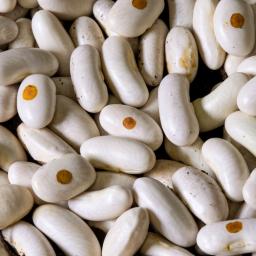 |
by David L. Chandler on (#6CHG1)
Counterfeit seeds can cost farmers more than two-thirds of expected crop yields. Now an MIT team may have found a way to outwit fakers: tiny tags of biodegradable silk-based material, each containing a unique combination of chemical signatures. The technology is based on what are known as physically unclonable functions, or PUFs, a concept used...
|
 |
by David L. Chandler on (#6CHG2)
The Namaqua sandgrouse, a bird native to the deserts of southern Africa, has a unique way of helping chicks survive before they can fly: the males frolic in the nearest watering hole and carry water back in their belly feathers for them to drink. In 1967, researchers found that the feathers can absorb 25 milliliters...
|
 |
by Anne Trafton on (#6CHG3)
A nanoparticle developed by MIT chemical engineer Daniel Anderson and colleagues can deliver messenger RNA encoding CRISPR gene-editing proteins to the lungs of mice. With further development, the researchers say, such particles could offer an inhalable treatment for cystic fibrosis and other lung diseases, snipping out and replacing the faulty genes that cause them. The...
|
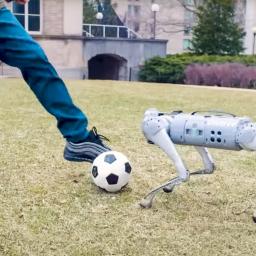 |
by Rachel Gordon on (#6CHG4)
It's no Lionel Messi, but a four-legged robot developed at CSAIL's Improbable Artificial Intelligence Lab can dribble a soccer ball on surfaces including grass, sand, gravel, mud, and snow. To develop these hard-to-script skills, the researchers turned to a simulation-a digital twin of the natural world. DribbleBot" started out with no idea how to dribble,...
|
 |
by Mike Mason on (#6CH2F)
Whether you think next-generation AI heralds an exciting new world for humankind or sows the seeds for its destruction, few business leaders can afford to ignore it. But in this febrile environment, it can be hard to plot a course that neither falls foul of the hype nor misses the opportunity entirely. You need only...
|
 |
by MIT Technology Review Insights on (#6CGY2)
The chemicals industry helped build the 20th century, and is urgently adapting to the 21st. Almost all daily goods rely on output from the chemicals sector, from clothes and home insulation to fertilizer and medicine. But this energy-hungry industry needs innovation to find safer, more sustainable products. With tightening regulation and growing pressure from consumers...
|
 |
by Rhiannon Williams on (#6CGW5)
This is today's edition ofThe Download,our weekday newsletter that provides a daily dose of what's going on in the world of technology. How electrifying steam could cut beer's carbon emissions What's happening? Next year, New Belgium Brewing will swap out one of the four natural-gas-powered boilers at its main brewing facility in Fort Collins, Colorado,...
|
 |
by Tate Ryan-Mosley on (#6CGS6)
This article is from The Technocrat, MIT Technology Review's weekly tech policy newsletter about power, politics, and Silicon Valley. To receive it in your inbox every Friday, sign up here. We've heard a lot about AI risks in the era of large language models like ChatGPT (including from me!)-risks such as prolific mis- and disinformation...
|
 |
by James Temple on (#6CGS5)
Next year, New Belgium Brewing will swap out one of the four natural-gas-powered boilers at its main brewing facility in Fort Collins, Colorado, for an electrified version designed to cut greenhouse-gas emissions. The modular, 650-kilowatt pilot boiler system was developed by AtmosZero, a startup also based in Fort Collins and coming out of stealth today....
|
 |
by Patrick Sisson on (#6CGQW)
As Rodrigo Camarena sees it, you can hail a car and order food on your smartphone; why shouldn't it also help you exercise your rights? Reclamo, a new web app created by Justicia Lab, the nonprofit innovation incubator that Camarena directs, helps documented and undocumented immigrant workers who have experienced wage theft. By clicking through...
|
 |
by Kavitha Prasad on (#6CG2M)
We are witnessing a historic, global paradigm shift driven by dramatic improvements in AI. As AI has evolved from predictive to generative, more businesses are taking notice, with enterprise adoption of AI more than doubling since 2017. According to McKinsey, 63% of respondents expect their organizations' investment in AI to increase over the next three...
|
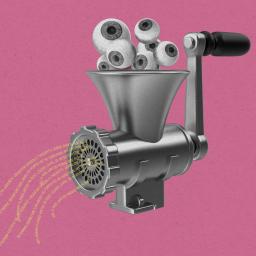 |
by Rhiannon Williams on (#6CFS5)
This is today's edition ofThe Download,our weekday newsletter that provides a daily dose of what's going on in the world of technology. Junk websites filled with AI-generated text are pulling in money from programmatic ads The news: AI chatbots are filling junk websites with AI-generated text that attracts paying advertisers. More than 140 major brands...
|
 |
by Charlie Metcalfe on (#6CFP9)
The Japanese concept of forest bathing," or shinrin-yoku (), has long been acclaimed for its supposed health benefits. Hundreds of scientific studies suggest that it can improve mental health and cognitive performance, reduce blood pressure, and even treat depression and anxiety. Yet forests can be hard to reach or, for some, completely inaccessible in a...
|